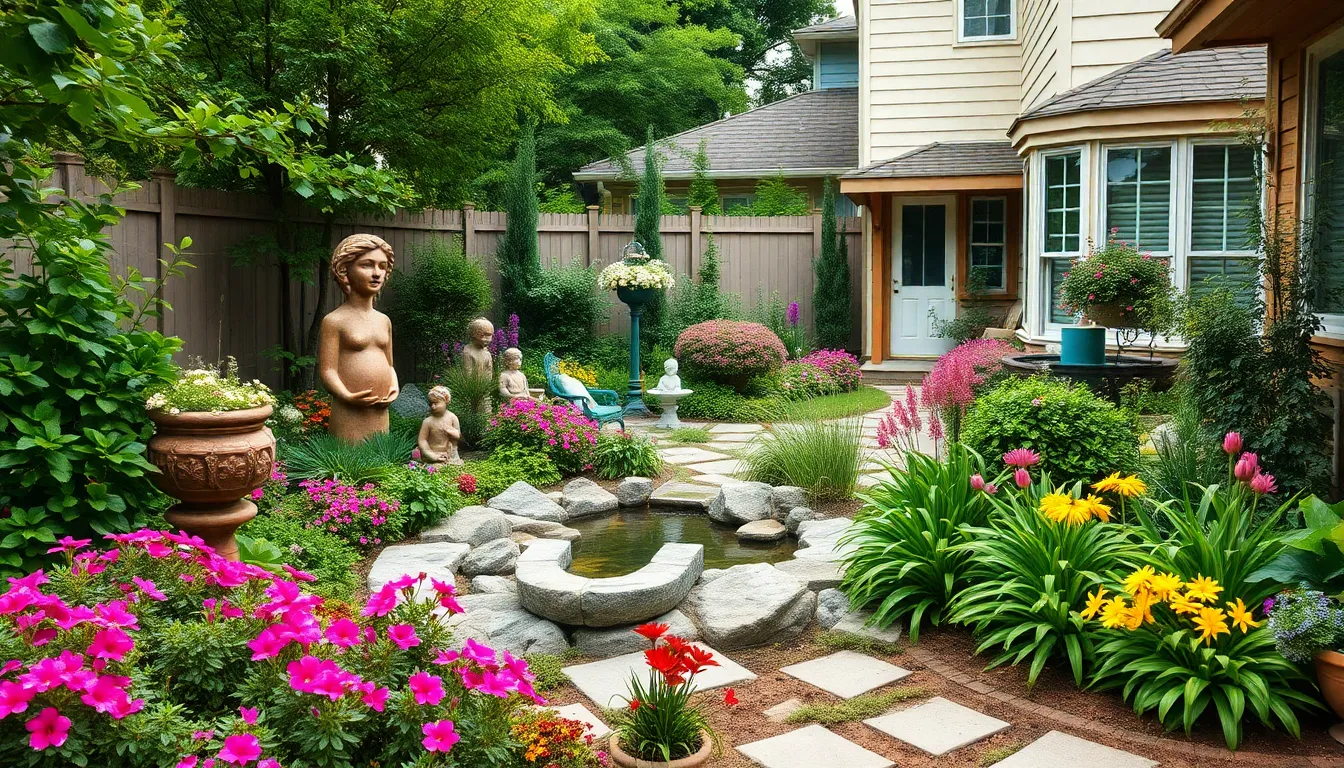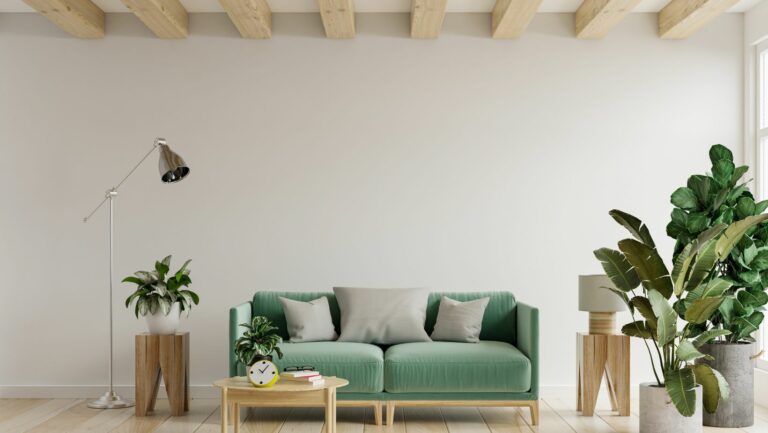Transforming a garden into a stunning outdoor oasis requires more than just planting flowers and shrubs. Creative garden landscaping combines artistic vision with practical design, turning ordinary spaces into extraordinary retreats. Whether it’s a small urban backyard or a sprawling estate, innovative landscaping ideas can breathe life into any environment.
From incorporating unique materials to designing functional spaces, the possibilities are endless. Garden enthusiasts can explore themes that reflect personal style, sustainability, and local ecology. By embracing creativity in garden landscaping, individuals not only enhance their property’s aesthetic appeal but also create a sanctuary that fosters relaxation and connection with nature.
Table of Contents
ToggleCreative Garden Landscaping Ideas
Creative garden landscaping encompasses imaginative approaches to blend nature with design, offering endless inspiration. Unique combinations of plants and innovative layouts can transform any garden into a stunning masterpiece.
Unique Plant Combinations
Combining diverse plants enhances visual appeal and promotes biodiversity.
- Contrasting Textures: Pair smooth-leaved plants like hostas with spiky plants like ornamental grasses. This contrast creates visual interest and depth.
- Seasonal Blooms: Mix plants that bloom at different times, ensuring color throughout the year. For instance, connect spring bulbs with summer perennials.
- Themed Plantings: Employ color schemes to group plants, such as purples and whites for a calming atmosphere or vivid reds and yellows for an energetic vibe.
- Native Species: Use local plants that thrive in the area’s climate and soil, offering low maintenance. They attract beneficial pollinators, promoting sustainability.
Innovative Garden Layouts
Creative layouts enhance functionality and aesthetics in garden spaces.
- Zoned Spaces: Divide gardens into distinct zones, such as relaxation areas, edible gardens, or children’s play zones, to create organized yet diverse environments.
- Vertical Gardening: Utilize walls and fences to plant vertically with trellises or wall planters, saving space and adding height to the landscape.
- Curved Pathways: Implementing curved pathways draws the eye and encourages exploration. They can lead to focal points like sculptures or water features.
- Layering Heights: Arrange plants in layers, placing taller plants at the back and shorter ones in front, to create depth and ensure visibility of all plants.
These creative ideas inspire unique garden experiences, reflecting personal style while celebrating the beauty of nature.
Benefits of Creative Garden Landscaping

Creative garden landscaping offers significant advantages, elevating both the beauty and utility of outdoor spaces. Understanding these benefits can inspire unique design opportunities.
Enhanced Aesthetic Appeal
Creative garden landscaping elevates visual interest by integrating diverse elements. Unique plant combinations provide vibrant colors and textures, enhancing beauty and creating a captivating environment. Customized accents, such as ornamental sculptures or water features, draw attention and foster engagement. Tailoring layouts and pathways adds depth to gardens, inviting exploration and interaction. Engaging designs transform typical outdoor areas into artistic expressions, making properties distinct and appealing.
Improved Functionality
Creative garden landscaping enhances usability while maximizing space. Functional features, like seating areas and outdoor kitchens, promote social engagement and outdoor activities. Garden layouts can address climate and terrain challenges, improving overall plant health and reducing maintenance. Incorporating vertical gardening solutions optimizes limited spaces, increasing greenery without crowding. Customized zones facilitate various activities, fostering experiences that accommodate relaxation, play, or food production. Such thoughtful design supports not only aesthetics but also living quality in outdoor environments.
Tips for Implementing Creative Garden Landscaping
Implementing creative garden landscaping involves thoughtful planning and design choices. Successful designs arise from a balanced combination of plant selection and hardscape elements.
Choosing the Right Plants
Choosing appropriate plants enhances both beauty and sustainability in garden landscaping. Consider factors such as climate, soil conditions, and light exposure.
- Select native species, as they thrive in local conditions and support local wildlife.
- Incorporate contrasting textures by combining fine-leaved plants with broad foliage to create visual interest.
- Utilize seasonal blooms to ensure year-round color and vibrancy in the garden.
- Create themed plantings based on color palettes or specific characteristics, such as drought-tolerant or shade-loving varieties.
- Layer plants of varying heights to add depth and dimension, optimizing vertical space effectively.
Incorporating Hardscapes
Incorporating hardscape elements adds functionality and formality to garden landscapes. Thoughtful integration of these features creates harmony between natural and built environments.
- Use pathways made from stone, gravel, or wood to guide visitors through the garden and create defined areas.
- Construct seating areas, such as benches or patios, to encourage relaxation and social interaction within the garden.
- Implement retaining walls to manage slopes and create leveled spaces for planting or seating.
- Design focal points with artistic elements like sculptures, fountains, or decorative trellises to draw attention and anchor the landscape.
- Create raised beds for easier access and maintenance, enhancing visual appeal and supporting efficient growing practices.
These tips ensure that garden landscapes are not only visually captivating but also practical and sustainable.
Common Mistakes to Avoid
Avoiding common mistakes in garden landscaping enhances both beauty and functionality. Here are key missteps to steer clear of.
Overcrowding Plants
Overcrowding plants reduces airflow and competition for nutrients. It causes plants to struggle and can result in disease spread. To prevent overcrowding, select appropriate spacing based on plant mature size. For example, perennials often require 12 to 24 inches apart while shrubs might need 3 to 6 feet of space. Regularly evaluate plant growth and adjust spacing as necessary to maintain health.
Ignoring Maintenance Needs
Neglecting maintenance requirements can lead to an unkempt appearance. Different plants have varying levels of care, including watering, pruning, and fertilizing. For instance, some native species require minimal upkeep, while exotic plants may demand more attention. Prioritize a garden plan that aligns plant selection with the desired maintenance level. This ensures sustainability and a consistently appealing garden throughout the seasons.
Creative garden landscaping offers a unique opportunity to transform outdoor spaces into personal sanctuaries. By carefully selecting plants and incorporating innovative design elements, anyone can create a garden that not only looks stunning but also enhances everyday life.
Embracing creativity in landscaping fosters a deeper connection with nature. It encourages exploration of diverse plant combinations and thoughtful layouts that cater to individual preferences and environmental needs.
Ultimately, a well-designed garden becomes a reflection of one’s style and a peaceful retreat that invites relaxation and enjoyment. With the right approach, every garden can evolve into a beautiful masterpiece that uplifts both the property and its inhabitants.



